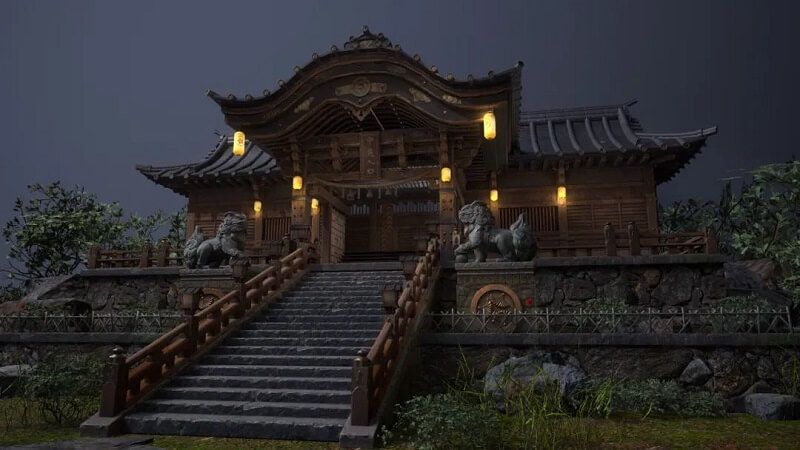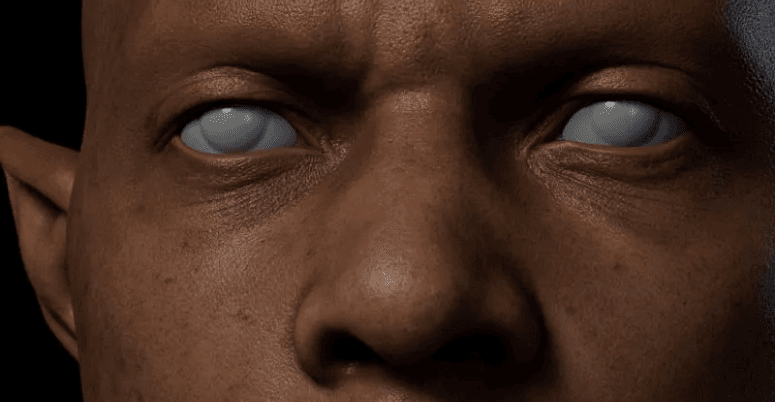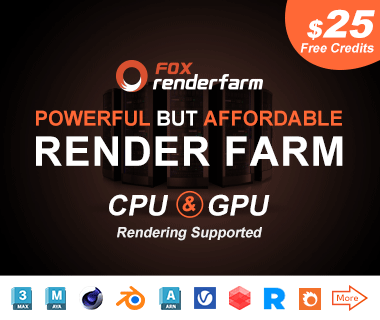Häufig verwendete Methoden zum Entpacken von UVs in 3ds Max
In diesem Artikel stellt Ihnen die Fox Renderfarm, ein führender Cloud Rendering-Dienste-Anbieter und eine Renderfarm in der CG-Branche, einige häufig verwendete Methoden zum Entpacken von UVs in 3ds Max vor. Die installierte Version von 3ds Max ist ziemlich alt, sie ist von 2014, aber insgesamt macht das nicht viel aus.
Um UVW zu bearbeiten, können Sie Folgendes öffnen: Bedienfeld > UVW aufklappen > UV Editor öffnen.

1. Obere Symbolleiste
Die Symbolleiste enthält Steuerelemente zum Bearbeiten von Texturteilobjekten im Ansichtsfenster und Steuerelemente zum Einstellen von Optionen.

Spiegeln und umdrehen
Von oben nach unten sind es horizontale Spiegel, vertikale Spiegel, horizontales Umdrehen, vertikales Umdrehen.

Der Unterschied zwischen ihnen ist jedoch, dass das Umdrehen dazu führen kann, dass sich das Modell entlang der ausgewählten Kante trennt.

Aber das gespiegelte Modell bleibt als eine Einheit bestehen.

Entpacken Option - Mesh
Wenn das Modell in eine Engine importiert werden soll, um z.B. eine UI-Materialanimation zu erstellen, ist das Raster ein wichtiger Punkt, den Sie berücksichtigen müssen. Die Reihenfolge und das Verhältnis der UV-Anordnung sind relativ wichtig.
Wenn Sie auf Öffnen klicken, wird die Oberfläche für die Entpackungsoptionen angezeigt.

Wenn Sie 'Raster anzeigen' wählen, ist der normale Bereich 0-1, was bedeutet, dass jedes Raster 0,1 ist.

Mit der Rastergröße können Sie die Frequenz des Rasters einstellen.

2. Untere Symbolleiste
Die beiden unteren Symbolleisten enthalten:
Auswahl und Umwandlung von Teilobjekten.

Aktivieren Sie die Anzeige der Attribute Symbolleiste.

Wählen Sie Eckpunkte, Kanten und Polygone (Flächen) mit der Methode des Umschaltens der Auswahl nach Element UV.
Dies ist der einfachste Befehl, aber auch der am häufigsten verwendete und praktischste.

UV-Auswahl erweitern
Wählen Sie zunächst einige Punkte aus.

Klicken Sie, um die UV-Auswahl zu erweitern. (Beachten Sie die Änderung der Anzahl der ausgewählten Punkte).

__UV-Auswahl schrumpfen __
Wählen Sie zunächst einige Punkte aus.

Klicken Sie, um die UV-Auswahl zu reduzieren. (Beachten Sie die Änderung der Anzahl der ausgewählten Punkte.)

Auswahl der UV-Farben
Sobald die UV-Farbenauswahl aktiviert ist, halten Sie die linke Maustaste gedrückt. Sie können mit der Maus Eckpunkte, Kanten und Polygone auswählen, indem Sie sie verschieben. Als nächstes können Sie die Größe des Pinsels vergrößern und dann verkleinern.

3. Dialogfenster Roll-Panel
Es enthält mehrere Roll-Panels, die verschiedene Tools zur Bearbeitung von Texturkoordinaten bieten. Drehen um die Achse -90 Grad/Drehen um die Achse 90 Grad. Mit diesen beiden Befehlen können Sie beim Anordnen von UV schnell die UV drehen.

Horizontale Abstände/vertikale Abstände/ausgewählte Elemente begradigen
Bei der Anzeige einiger röhrenförmiger Objekt-UVs können horizontale Abstände/vertikale Abstände zusammen mit der Funktion zum Begradigen ausgewählter Elemente im Elementrollen-Panel verwendet werden, um sie umzuformen.

Wählen Sie zunächst die UV und klicken Sie auf die Option 'Ausgewählte Elemente begradigen'. Dieser Befehl muss im Polygonmodus aktiviert werden.

Wählen Sie dann die Kanten (in rot) wie in der Abbildung gezeigt.

Klicken Sie auf den vertikalen Abstand, und Sie sehen, dass der Abstand zwischen ihnen richtig angezeigt wird.

Quick Peel
Bei der Bearbeitung von UVs in 3ds Max ist die Auswahl von Quick Peel in der Regel die erste Wahl. Im Grunde genommen kann Quick Peel die Anforderungen der meisten UVs erfüllen, ohne dass andere Befehle zur Anpassung erforderlich sind. Wenn Anpassungen erforderlich sind, können Sie Relax verwenden und dann erneut auf Quick Peel klicken.
Wie Sie sehen, ist dieser Teil von UVs nicht ausgeklappt worden.

Wählen Sie zunächst eine Kante aus und klicken Sie auf 'Unterbrechen'.

Klicken Sie auf Quick Peel im Polygonmodus.

Elemente transformieren - UVs skalieren
Mit der Funktion der Größenanpassung von UVs im Bedienfeld der Transformation von Elementen können Sie die Größe von UVs, die bereits aufgeteilt wurden, anpassen, so dass sie für die Anzeige geeignet sind. Wie Sie sehen, ist die Texturdichte der UVs nicht einheitlich.

Wählen Sie zwei zur gleichen Zeit.

Klicken Sie auf 'Elemente neu skalieren', um sie automatisch in der passenden Größe anzuordnen und ihre Dichte anzupassen.

4. Zusammenfassung
Ich persönlich verwende 3ds Max nicht oft, um UVs zu entfalten. Normalerweise verwende ich Maya und RizomUV, um UVs zu verarbeiten. Aber manchmal, wenn die UV-Anforderungen nicht so komplex sind, kann das Importieren und Exportieren bei einer großen Anzahl von Modellen sehr viel Zeit in Anspruch nehmen, auch wenn es inzwischen so viele Plugins gibt. Daher können einige relativ einfache Modelle, die nicht allzu kompliziert sind, direkt in 3ds Max gelöst werden.
Recommended reading
Top 9 Best And Free Blender Render Farms of 2025
2024-12-30
What is Jibaro? Reveal the Story and Techniques Behind the Production of Jibaro "Love, Death & Robots"
2025-11-03
Top 10 Free And Best Cloud Rendering Services in 2025
2025-03-03
9 Best & Free 3D Rendering Software for Architects & Designers
2025-11-07
Top 8 After Effects Render Farm Recommended of 2025
2025-02-10
Easy Cel Shading Tutorial for Cartoon in Blender Within 2 Minutes
2025-11-26
Shocked! The Secret Behind Using 3D to Make 2D Animation was Revealed!
2025-02-10
How to Render High-quality Images in Blender
2024-12-04
Partners
Previous: Die 4 besten Rendering-Engines für Multi-GPU-Rendering
Next: Schadet Rendering Ihrem Computer?
Interested







